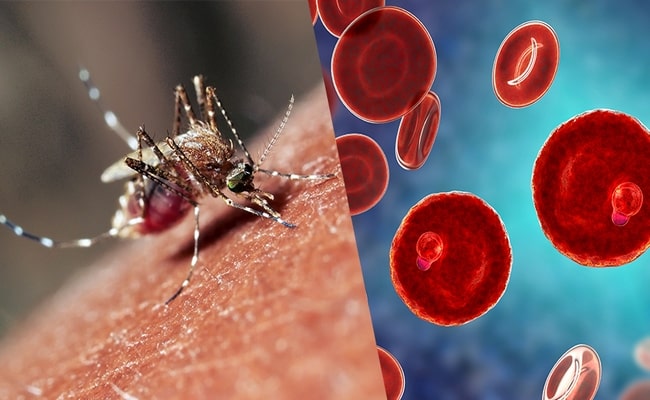What is Malaria Disease?

Types of Species of Malarial Parasites
There are four species of malarial parasites which are listed below:
- Plasmodium Falciparum: Incubation period varies 12 (9-14) days.
- Plasmodium Vivax: Incubation period varies 14 (8-17) days.
- Plasmodium Quartan: The incubation period varies 28 (18-40) days.
- Plasmodium Ovale: Incubation period varies 17 (16-18) days.
Paroxysmal attacks are characteristic of malaria except in Plasmodium falciparum infection.
A typical paroxysm may be divided into:
- Cold Stage: Lasting for 20min to 1hr,
- Hot Stage: Lasting for 1-4hr,
- Seating Stage: Lasting for 2-3hrs.
Types of Fever in Malaria Disease:
There are mainly four types of malaria fever which are explained in the following:
1. Tertian Fever (P. Vivax or p. Ovale):
Paroxysm occurs on alternate days. The spleen becomes palpable.
2. Quatrain Fever (P. Malaria):
Paroxysm occurs at an interval of 2 days. Scanty urine, albuminuria, and hematuria may occur.
3. Falciparum Fever (P. Falciparum):
It may be insidious and the fever continuous, remittent, or irregular, typical paroxysms are unusual. Splenomegaly and serious complications may develop.
4. Quotidian Fever:
Sign and Symptoms of Malaria Disease:
Clinical manifestations vary according to different species of Plasmodium. Some features are common which are presented below:
- Fever,
- Chill,
- Rigor,
- A headache,
- Muscle pain,
- Anemia,
- Herpes labials,
- Enlargement of spleen and liver,
- Mild jaundice.
Vector Transmission:
Malaria is transmitted by the bite of certain species of infected female Anopheles mosquitoes.
Direct Transmission:
- Infected blood transmission,
- Congenital malaria,
- Infected needles.
It includes-
- Age- all ages are affected,
- Sex- male > female
- Immunity- the man has no natural immunity.
More questions related to this article:
- What do you mean by malaria?
- Define malaria.
- What are the causative species of parasites for malaria?
- Mention four species of malarial parasites.
- What types of fever occurred due to malaria?
- What are the common clinical features of malaria disease?
- What are the common sign and symptoms of malaria?
- What are the major symptoms of malaria disease?
- Describe the mode of transmission of malaria.
- How malaria transmits from mosquito to human?

Maria Khatun Mona is a Founder and Editor of Nursing Exercise Blog. She is a Nursing and Midwifery Expert. Currently she is working as a Registered Nurse at Evercare Hospital, Dhaka, Bangladesh. She has great passion in writing different articles on Nursing and Midwifery. Mail her at “maria.mona023@gmail.com”
